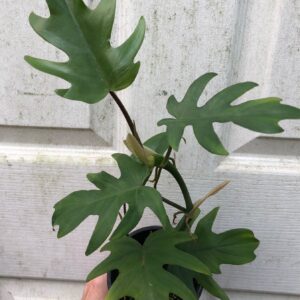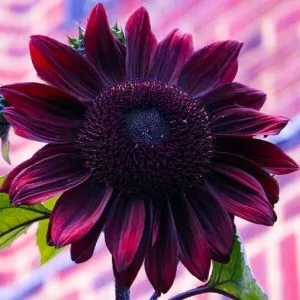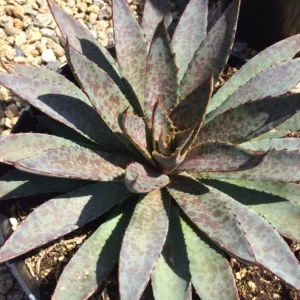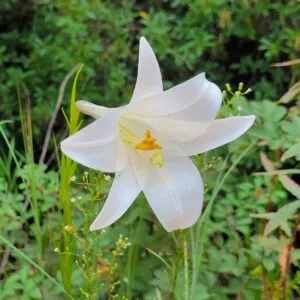No products in the cart.
Table of Contents
The Calathea orbifolia will add some excitement to your living space. One thing is for sure: it will become an attention grabber in the home.
Calathea plants are statement plants for any household collection with unique foliage. You can place it in a well-lit bathroom, and the good news is, wait for it! It has a medium plant care level. Is this your first encounter?
Sit down for a while, as your life will change once Plantly provides you with the Calathea Orbifolia care tips.

What Are Calathea Plants?
Calathea orbifolia plants belong to the genus Calathea, with many different cultivars available. These tropical plants are found in their natural habitat, growing as perennial flowering plants in Bolivia in South America.
The previously known scientific name is Goeppertia orbifolia, and as indoor plants, they seldom bloom and are more for ornamental purposes. The Calathea orbifolia’s leaves have striking orbic patterns with light green round and metallic stripes. Believe us. It is something to behold.
You will see it when walking into a home, forgetting about the other plants. These tropical houseplants grow lush when placed in a nice, brightly lit spot to appreciate the foliage. Your kitchen or bathroom will work well to keep this plant happy.
The best part is at night when it folds up its leaves as if praying. Hence, the other name is the prayer plant. Do not believe us! Then, wait for nighttime to see what happens. The candy-striped leaves are to die for when sitting watching them.
Furthermore, the plant is happiest growing inside or outside in the USDA hardiness zones 10 to 11. As you will learn from the care tips, this prayer plant family can grow outside South America.
Calathea Orbifolia Care
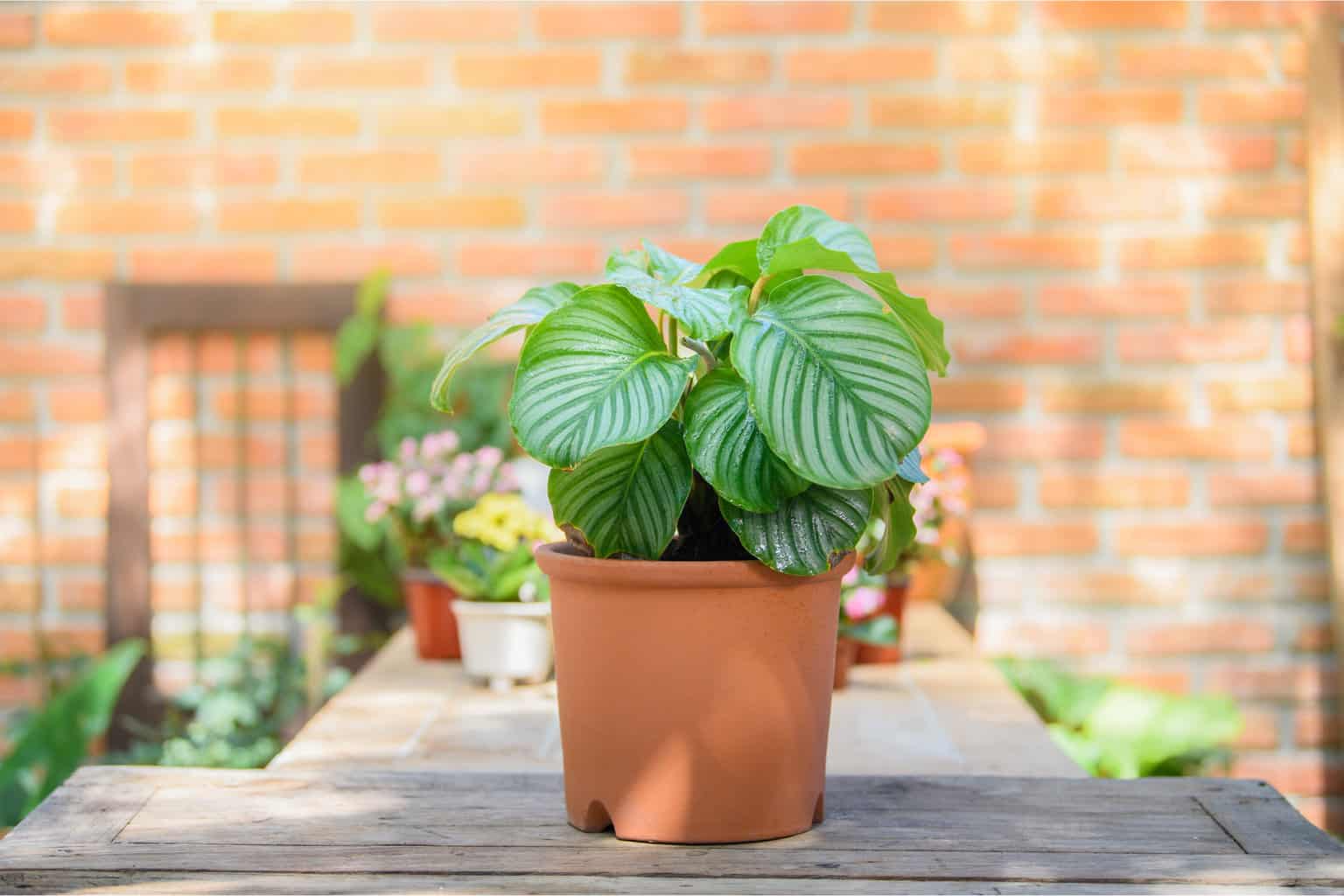
Regarding the Calathea orbifolia care guide, this plant needs attention with constantly moist soil away from direct sun to keep it alive. The reason is that these prayer plants are nurtured in greenhouses to provide them with the right Calathea orbifolia temperature and humidity levels.
Still, it does not mean you cannot mimic the tropical plant native habitat in your home. Furthermore, the Calathea orbifolia leaves need regular dusting with a damp cloth to prevent the pores from clogging.
Calathea Orbifolia Light

Calathea orbifolia loves bright, indirect light to remain happy. The best is to avoid placing the plant in direct sunlight, as it will result in brown leaf edges.
Your plant can tolerate medium light, but brightening the candy-striped leaves is not the best. So, the best is to rotate the greenery at least once a week to help with even growth.
Of course, you might be asking if we can treat them as outdoor plants. Yes, as long as they sit in a shaded area with no direct sunlight. So, to have a healthy Calathea orbifolia plant, provide them with bright filtered light.
Temperature Requirement

This is where prayer plants get fussy, and that is temperature. The Calathea orbifolia plant grows best in warm temperatures around 65 to 75 degrees F. One thing is sure: the Calathea orbifolia plants will inform you if they are unhappy.
If it is too cold (brrr), you notice drooping leaves; when it is too hot, you see the Calathea orbifolia leaves curling. When you take note of these signs, you can keep your prayer plants happy.
Humidity
Calathea plants love high humidity.
Your Calathea orbifolia plant thrives in a humid environment with at least 50% humidity. So, your average room humidity will not help. Instead, we recommend placing them as indoor plants in the kitchen or bathroom.
Your plant will receive enough moisture to thrive. Alternatively, you can increase the humidity levels by misting it frequently. Or you can place your Calathea orbifolia on a pebble tray or group them with other plants.
In stock In stock In stock In stock
$25.95
Sold By:
SunSoul Plants
$42.95Philodendron Mayoi Plant in 4″ pot, philodendron Tahiti
Rated 4.87 out of 5 based on 98 customer ratings00
Sold By:
SunSoul Plants
$10.00
Sold By:
Cacti and Exotica
Parodia magnifica—Balloon Cactus
Rated 4.98 out of 5 based on 59 customer ratings00
Sold By:
Cacti and Exotica
Free Shipping
$13.98
Sold By:
CZ Grain
Rainbow Eucalyptus Tree 100 Seeds – Stunning Colored Bark – Eucalyptus deglupta
Only 849 available and it’s in 5 people’s basket Rated 4.60 out of 5 based on 156 customer ratings01
Sold By:
CZ Grain
Free Shipping
$7.98 – $12.29
Sold By:
CZ Grain
Chocolate Cherry Sunflower Seeds to Plant Exotic Heirloom & Non-GMO Chocolate Cherry Sunflowers
Only 891 available and it’s in 2 people’s basket Rated 4.60 out of 5 based on 156 customer ratings00
Sold By:
CZ Grain
How to Water Calathea Orbifolia
Okay, gardeners, this is where the Calathea orbifolia care becomes tricky. While your plant adores moisture, it does not love soggy soil. Yes, we said it is a plant with sensitive roots. We recommend checking the soil before watering.
If the top layer of soil has some moisture, leave it be. If you feel soil dry to the touch, then water your plant. One thing that the Orbifolia plant is not is drought tolerant but can go a few days without water. If you overwater your plant, it leads to root rot, making it ill.
During the warm months, you can water the Orbifolia plant once a week. While in the winter months, you can reduce watering. During winter, the Calathea goes into dormancy and does not need much watering.
Another important thing is if you use tap water, leave it to stand at room temperature before using it. Alternatively, you can use distilled water as well. Ensure that the excess water drains from the pot’s drainage holes.
Fertilizer
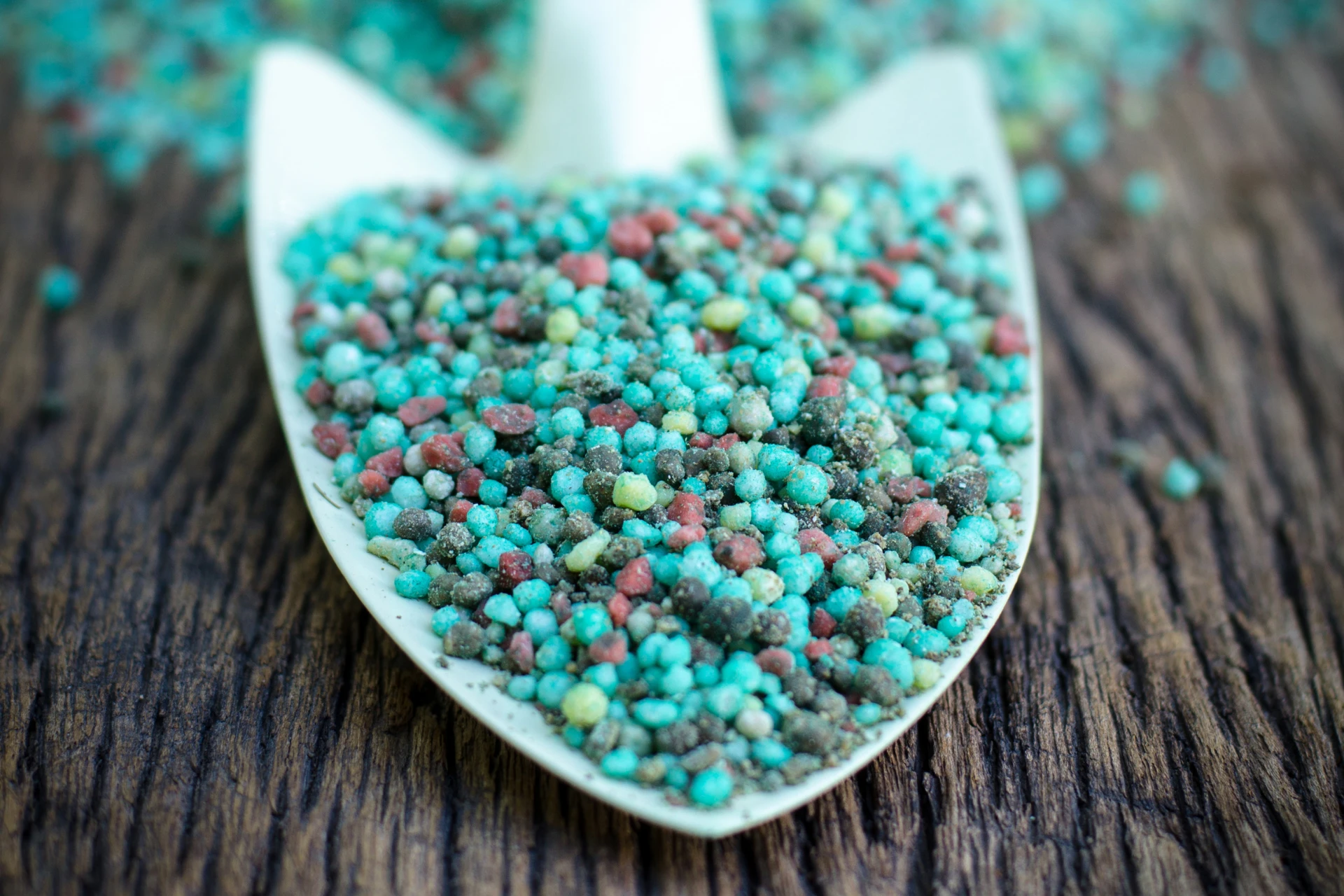
For feeding your plant to ensure the Calathea Orbifolia leaves remain splendid, only fertilize it in the growing season. Your indoor plant needs a well-balanced liquid houseplant fertilizer high in nitrogen with low potassium levels.
You can do this once a month. However, refrain from feeding in the colder months as your plant becomes dormant. You do not want to burn the root ball. Once the growing season is over, there is no need to feed them with fertilizer.
Potting Your Calathea Orbifolia
Choosing the right pot with enough drainage holes is a big plus for Calathea orbifolia. You can transplant your tropical beauty every two years by increasing the container by one size, as your plant does not enjoy being rootbound.
When transplanting the Calathea Orbifolia, you can check the roots for rot and give it fresh soil.
Calathea Orbifolia Soil
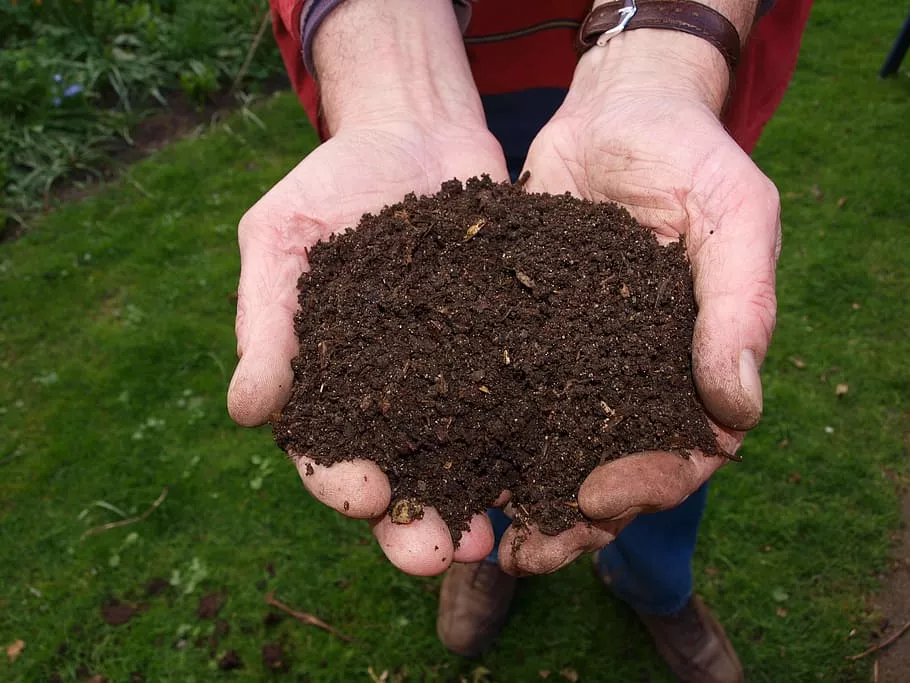
Calathea orbifolia needs extra protection when it comes to the potting soil. They prefer well-draining potting soil to regular soil. It helps if it’s well-draining and has a 6.5 soil pH.
Keep the soil moist, but remember not soggy. As mentioned, the pot must not cause the plant to become root-bound. Calatheas enjoy a peat-based soil mix, and the same applies to repotting as it will help excess water to drain freely through the drainage holes.
You can buy a ready-made compost mix or make your own. Here is one of the best recipes for your Calathea orbifolia to help retain soil moisture:
Mix equal parts of potting soil
Peat Moss
Pumice Stones
The soil provides adequate drainage with sufficient moisture for your sensitive houseplant.
Only 1 left in stock Only 1 left in stock In stock In stock
$65.99
Sold By:
Succulent Oasis
Succulent Plant Mangave Bloodspot
Rated 4.84 out of 5 based on 352 customer ratings02
Sold By:
Succulent Oasis
Free Shipping
$87.50
Sold By:
BONSAI WORLD LLC
Brush Cherry Indoor Bonsai Tree Large
Sold By:
BONSAI WORLD LLC
$6.00 – $40.00
Sold By:
Plants by Stinky Boo
Variegated String of Hearts
Only 30 available and it’s in 4 people’s basket Rated 5.00 out of 5 based on 2 customer ratings01
Sold By:
Plants by Stinky Boo
Free Shipping
$3.50 – $8.00
Sold By:
Chill Hill Farms
Philippine Lily | Lilium Philippinese | Florida Grown
Sold By:
Chill Hill Farms
Calathea Orbifolia Plant Propagation
As Calathea orbifolia has a high-strung behavior, it acts out even when you make the slightest mistake. Therefore, Calathea propagation is delicate and challenging. But do not get frightened, as it is possible to divide the mother plant when repotting.
It helps to do this in spring with growth to help your Obrifolia suffer minimal stress and help the new plant establish itself fast. Then, as Calatheas grow best in temperatures of 65 F, propagation works best in the warmer season.
You cannot propagate young plants, as there is no clump production to transform them into strong plants. So you can only do this if clumps are present around the Calatheas. The last tip is to water your Calathea Orbifolia well a few days before using the following described method.
Division
Start by preparing the sterilized pot and your potting mix, keeping it ready. You do not want to expose the root ball for too long.
Pull the roots out of the container, and yes, it can be tricky as you do not want to pull too hard. Please do this by laying the pot on its side and hitting the side using your hands to dislodge the roots.
Remove the soil to expose the roots and needs patience gardeners.
You will notice the baby clumps growing on the sides of the mother plant.
Separate only the Orbifilia with one tuber root and a healthy leaf.
No, do not go and rip it as the roots are tangled, and pull them apart gently.
Do this by untangling the roots at the base of your plant.
Once the roots are separated, plant the baby Calathea into their new homes in the recommended potting mix.
Now, the most crucial part starts to protect your babies from transplant shock. Place your Calathea in a warm location with high humidity and bright indirect light. You can cover them with a plastic bag to prevent them from drying out.
The potting soil must remain moist and drain well from the bottom, preventing root rot. When done correctly, new growth should appear in the first three weeks. Keep the plastic bag over them for a couple more days when noticing new growth before removing it.
Pruning Your Calathea Orbifolia
You can prune your Orbifolia only when needed and prevent doing this in the fall and winter seasons. The prayer plant is sensitive. Yes, we know we have said it over and over. You only need to use clean gardening shears to prune the yellowish or damaged leaves.
Calathea Orbifolia Varieties and Similar Plants
The Calathea plant collection is huge, and here are some of the popular varieties:
![]() Zebra Plant
Zebra Plant
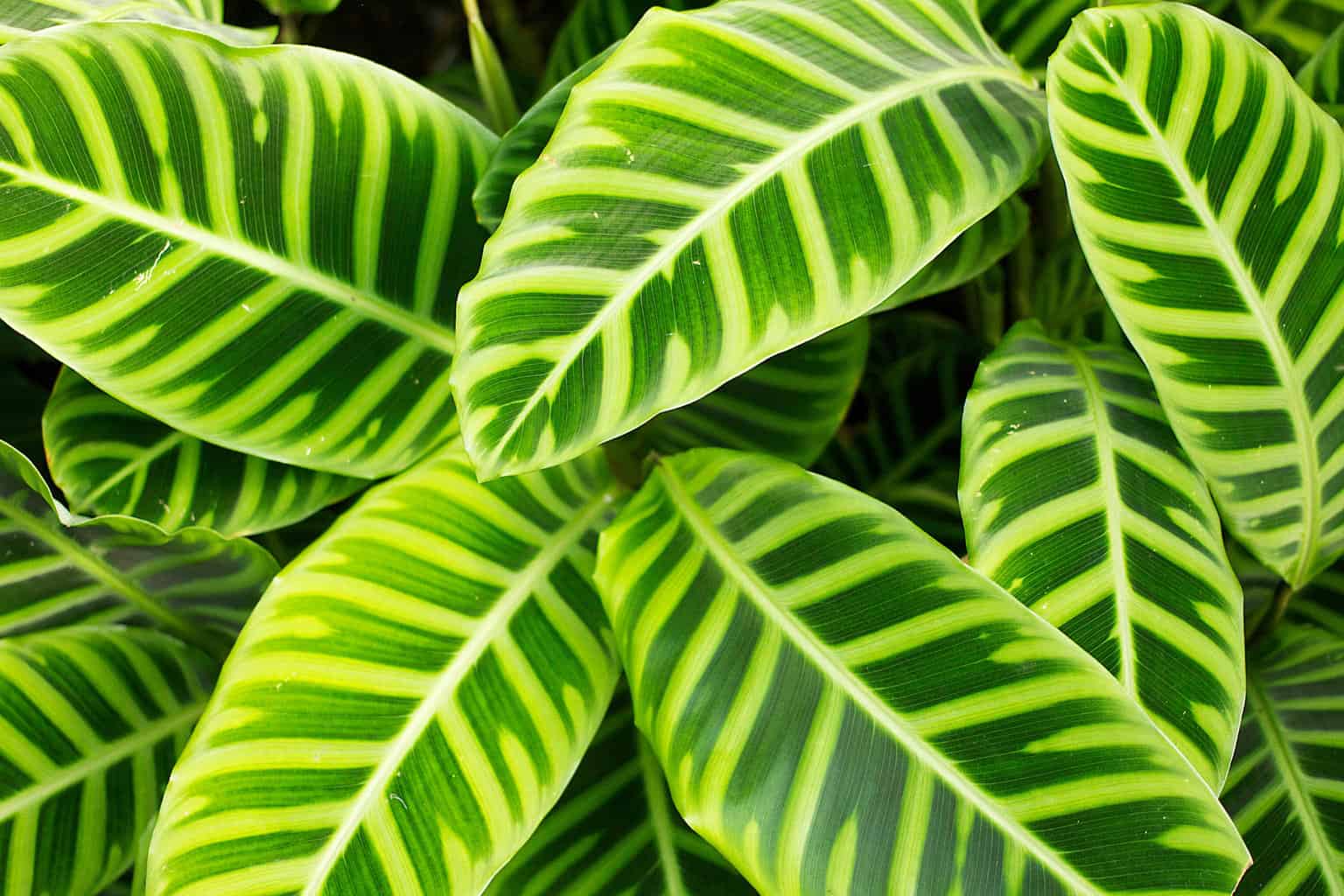
The Calathea Zebrina also has distinctive green, beautiful stripes with a velvety surface and lush foliage. Zebrina is a prayer plant calathea that folds its leaves at night and opens during the day.
![]() Calathea White Fusion
Calathea White Fusion
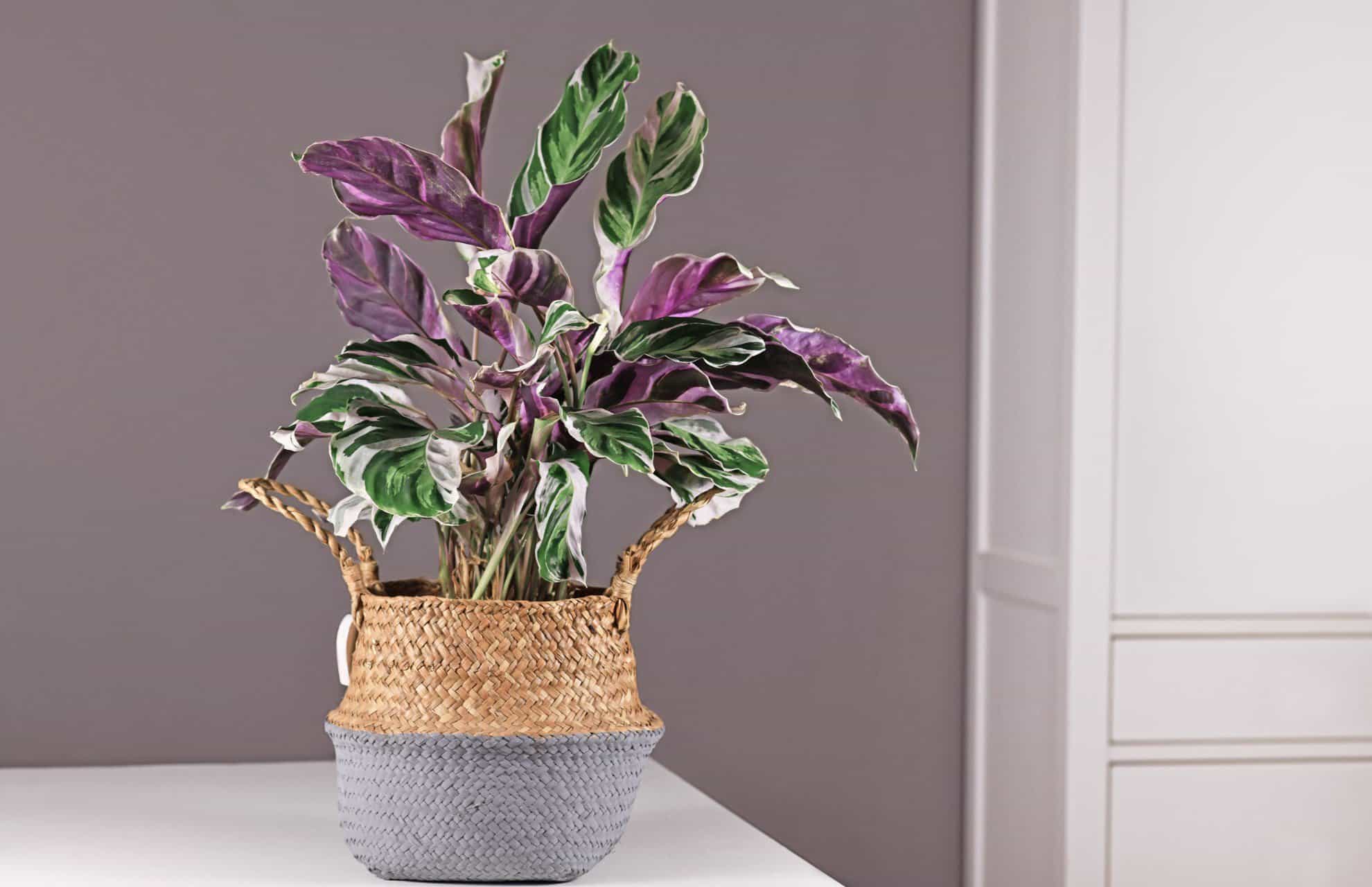
Is one spectacular plant in the Calathea family. Sadly it is a hard plant to care for and not suitable for the beginner gardener. But hey, if you enjoy a challenge, give it a try as it provides you with stunning looks.
![]() Calathea Flamestar
Calathea Flamestar
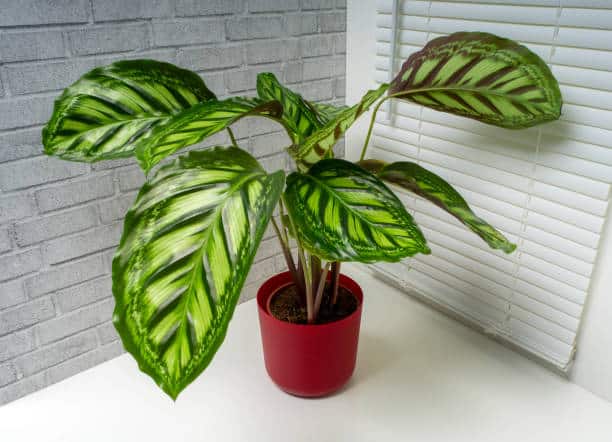
Is one massive foliage with patterns on the leaves and also as fussy as the Calathea Orbifolia but worth the trouble.
Calathea Orbifolia Diseases & Pests
As Calathea orbifolia has particular preferences in the environment, your plants are often pestered by pests. Here are some common insects that could affect your prayer plant.
Aphids
Mealybugs
Thrips
Common diseases are root rot and fungal diseases like powdery mildew caused by high humidity when the leaves get wet and do not dry out before night.
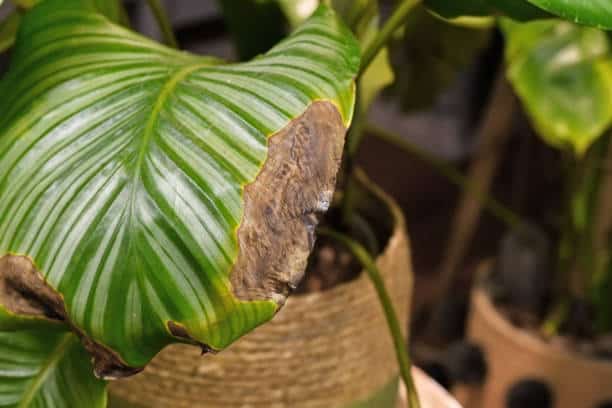
Frequently Asked Questions
The Calathea orbifolia is a medium-fast grower indoors. The Calathea can grow up to one or two feet in a year.
It is a sensitive plant, and the Calathea needs the right temperature and humidity throughout the year.
Using water from a tap is one reason your Calathea orbifolia has brown edges on the leaves. For example, your water from the tap might have high chlorine, fluoride, salts, and more solutions. If this is the case, try using filtered water.
All plants require sunlight, but the amount they can tolerate varies. Calathea orbifolia thrives in bright, indirect light, as direct sunlight can damage its gorgeous foliage. However, this tropical beauty can adapt to different light settings if the room temperature remains high. One ideal location for this stunning plant is the kitchen.
Not all Calatheas require misting, but many benefit from increased humidity. Calathea orbifolia is native to tropical regions and thrives in highly humid environments. Misting its leaves can help to replicate the moist condition of your plant.
The tropical houseplant is friendly around children and pets as it is not toxic.
Whether you want to buy, sell or simply reach out to other plant enthusiasts, Plantly is the right place to be!
-
$19.99Sold By: BubbleBlooms
In stock
Hoya retusa
Rated 4.81 out of 5 based on 279 customer ratings01Sold By: BubbleBlooms -
$66.21Sold By: Carlo's Plant Farm
In stock
6 Crape Myrtle Muskogee | Carlo`s Plant Farm
Rated 5.00 out of 5 based on 22 customer ratings00Sold By: Carlo's Plant Farm -
Free Shipping$8.29Sold By: CZ Grain
In stock
Dwarf Lemon Tree Seeds
Only 886 available and it’s in 5 people’s basketRated 4.60 out of 5 based on 156 customer ratings00Sold By: CZ Grain -
$14.99Sold By: BubbleBlooms
$15.99In stock
Variegated Hindu Rope, Rare Hoya, Carnosa Compacta Regalis, Crispa Variegata, 2 inch pot
Rated 4.81 out of 5 based on 279 customer ratings00Sold By: BubbleBlooms
